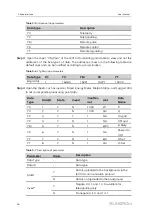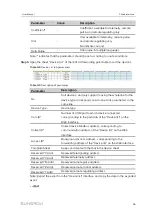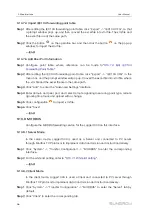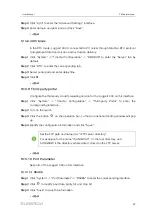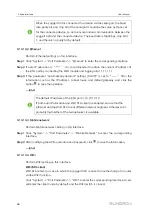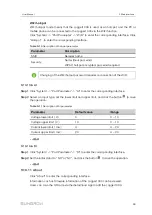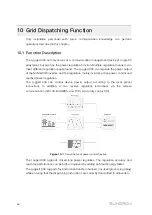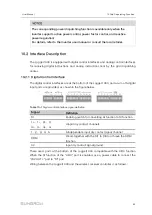
64
Step 2
Set the active control mode to "Disable" and click “Save”.
-- -- E
En
nd
d
10.3.1.2 Remote power control
When the instruction source is IEC104 or MODBUS TCP protocol, set the active control
mode to "Remote power control".
Step 1
Click "Power control" -> "Active power" to enter the active power interface.
Step 2
Set the active control mode to "Remote power control".
Step 3
Set remote dispatching parameters. For specific parameter description, refer to the
following table.
Table 10-3
Parameter description
P
Pa
arra
am
me
ette
err
D
De
essc
crriip
pttiio
on
n
Communication
abnormality output (%)
Communication is abnormal, and specified dispatch
output value is delivered.
Control method
Open loop control: Remote monitoring background is
connected and active instruction of remote dispatching
is sent to the power output port of the inverter, thereby
achieving active power control.
Closed-loop control:
•
In case no Smart Energy Meter is selected, remote
monitoring
background
is
connected,
active
instruction of remote dispatching is used as target
value, and active power compensation ratio is
calculated and sent to the power output port of the
inverter. Generally, this strategy is used for fast and
accurate active power regulation.
•
In case a Smart Energy Meter is selected, remote
monitoring
background
is
connected,
active
instruction of remote dispatching is used as target
value, active power of the meter needs to be
collected and used as input parameter, and active
power compensation ratio is calculated and sent to
the power output port of the inverter. Generally, this
strategy is used for anti-backflow or avoiding zero
power feed-in.
Select energy meter /
transformer*
Unselected
Select Smart Energy Meter / transformer involved in
power regulation
User Manual





